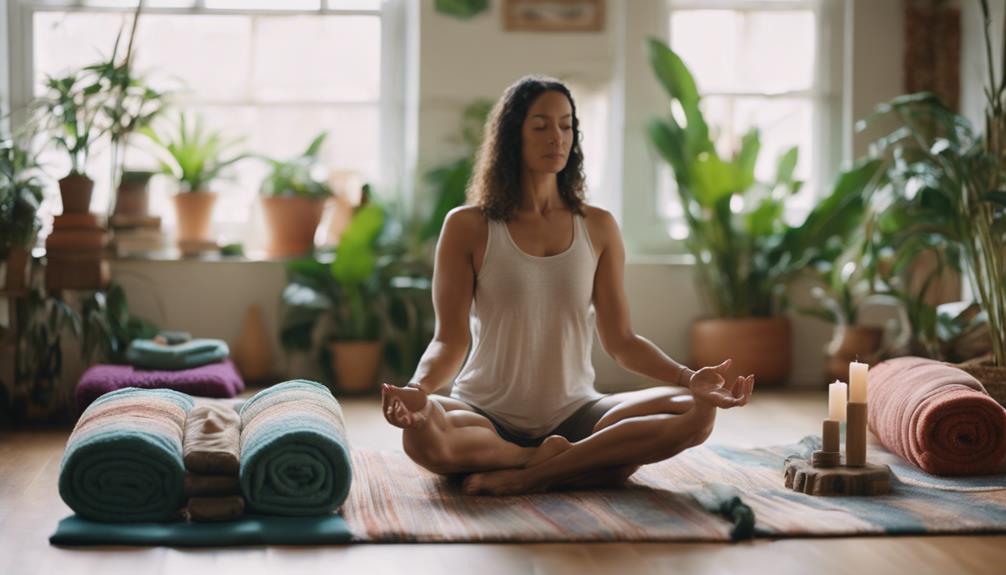Yoga For Anxiety And Stress

“`html
Yoga for Anxiety and Stress: A Path to Peace and Calm
In today’s fast-paced world, anxiety and stress have become common challenges that many people face. Fortunately, one effective and holistic approach to managing these feelings is through yoga. This ancient practice not only promotes physical well-being but also cultivates mental clarity and emotional stability. In this article, we will delve into how yoga for anxiety and stress can transform your life and provide practical tips on incorporating it into your routine.
Understanding Anxiety and Stress
Anxiety and stress can manifest in various ways, affecting our physical health, emotional well-being, and overall quality of life. Common symptoms include restlessness, irritability, difficulty concentrating, and physical discomfort such as muscle tension and headaches. Understanding the root causes of these feelings is crucial for effectively managing them. Yoga for anxiety and stress offers a natural remedy by encouraging relaxation, mindfulness, and a deeper connection with oneself. By recognizing the signs of anxiety and stress, individuals can take proactive steps to address these issues through yoga.Is Pilates A Form Of YogaHow Long Should You Do Yoga A DayHow Long Yoga Per Day
The Science Behind Yoga’s Effectiveness
Numerous studies have highlighted the positive effects of yoga on anxiety and stress levels. Yoga encourages the body’s relaxation response, reducing the production of stress hormones such as cortisol. This practice also promotes the release of neurotransmitters that enhance mood, such as serotonin and dopamine. Furthermore, yoga encourages mindfulness, helping practitioners to focus on the present moment rather than worrying about the past or future. This shift in focus can significantly alleviate anxiety and stress, making yoga an invaluable tool for mental health.
The Benefits of Yoga for Anxiety and Stress Relief
Practicing yoga has numerous benefits that can directly contribute to reducing anxiety and stress. Firstly, yoga enhances physical fitness, which in turn improves overall health and boosts self-esteem. Secondly, the breathing techniques used in yoga, known as pranayama, help calm the nervous system, promoting relaxation and reducing feelings of panic. Additionally, yoga encourages self-awareness and self-acceptance, fostering a positive mindset. These combined benefits make yoga an effective practice for managing anxiety and stress, enabling individuals to lead more balanced lives.
Choosing the Right Type of Yoga
When it comes to yoga for anxiety and stress, not all styles are created equal. Some types of yoga, such as Hatha, Restorative, and Yin Yoga, are particularly beneficial for relaxation and stress reduction. Hatha yoga focuses on gentle movements and deep breathing, making it a great choice for beginners. Restorative yoga utilizes props to support the body in passive stretches, allowing for deep relaxation. Yin yoga, on the other hand, encourages longer-held poses that target the connective tissues, promoting a meditative state. Choosing the right type of yoga can enhance its effectiveness in managing anxiety and stress.
Incorporating Yoga into Your Daily Routine
To reap the benefits of yoga for anxiety and stress, it’s essential to incorporate it into your daily routine. Start by setting aside a specific time each day to practice, even if it’s just for 15-20 minutes. Create a calming environment by choosing a quiet space, dimming the lights, and playing soothing music. Utilize online resources or apps to guide your practice, especially if you are new to yoga. Consistency is key; over time, you will notice improvements in your mood, resilience to stress, and overall mental clarity.
Mindfulness and Meditation in Yoga Practice
Integrating mindfulness and meditation into your yoga practice can enhance its stress-relieving benefits. Mindfulness involves being fully present in the moment, allowing you to observe your thoughts and feelings without judgment. This practice can be incorporated into your yoga routine by focusing on your breath and bodily sensations during each pose. Meditation, on the other hand, can be practiced both on and off the mat. Consider dedicating a few minutes after your yoga session to sit in silence, focus on your breath, and cultivate a sense of inner peace. These practices not only complement yoga but also provide additional tools for managing anxiety and stress.
Conclusion: Embrace Yoga for a Stress-Free Life
In conclusion, yoga for anxiety and stress is a powerful practice that can transform your mental and emotional well-being. By understanding the benefits of yoga, choosing the right style, and incorporating mindfulness and meditation into your routine, you can effectively manage stress and anxiety. Remember, the journey to mental wellness is a personal one, so be patient with yourself as you explore yoga. Embrace this ancient practice, and take the first step towards a calmer, more balanced life today.
“`
This blog post is structured with clear headings, uses the keyword “yoga for anxiety and stress” naturally throughout the text, and follows SEO best practices to ensure readability and engagement.